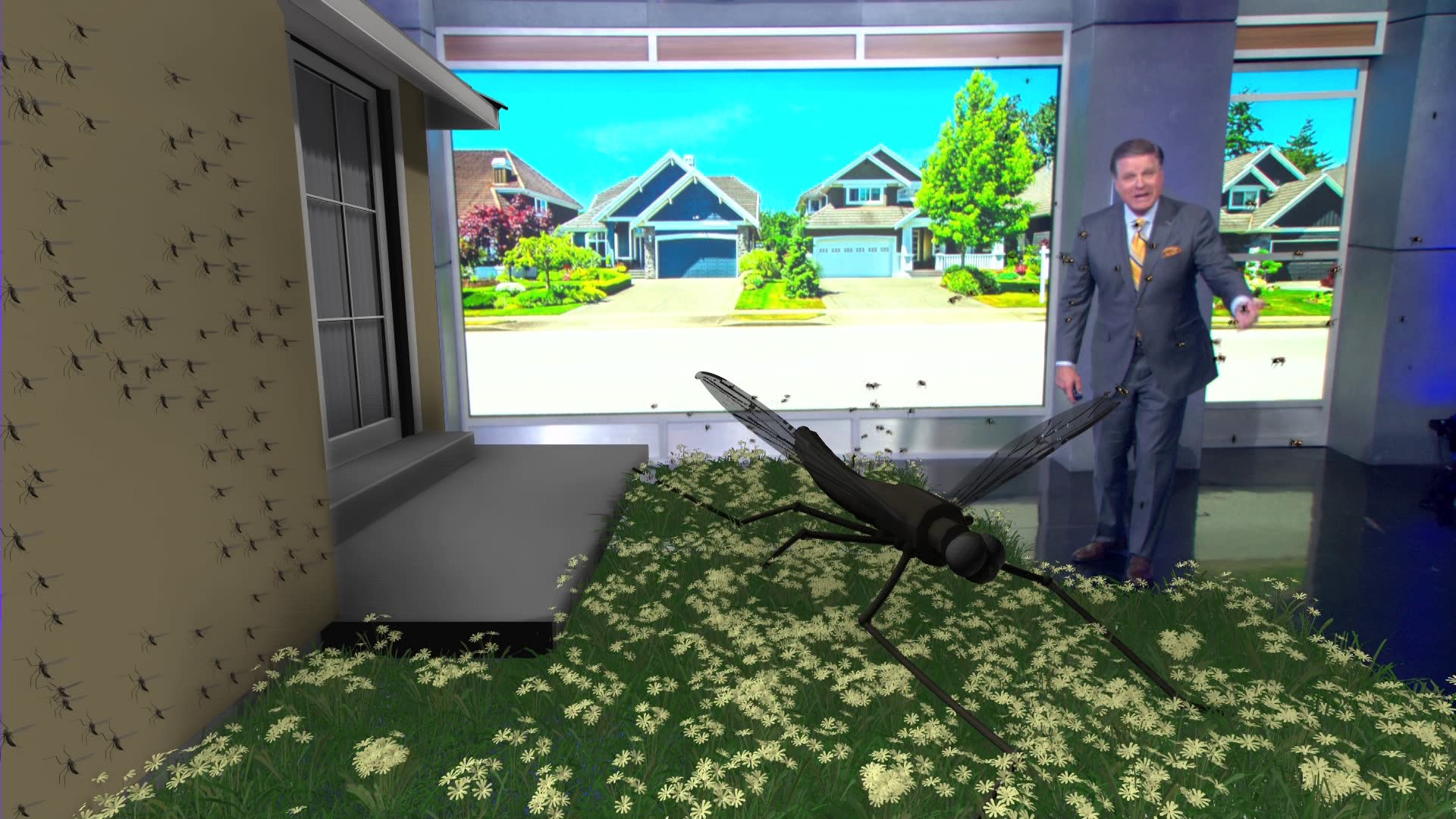TEXAS, USA — Thousands across North Texas are dealing with squatters of late -- uninvited guests who've moved in without even paying rent.
Anyone who has so much as opened a door in recent weeks has probably unwittingly welcomes these visitors into their homes -- pesky, not-so-little flying bugs, who waltz their way inside without even saying hello.
They look somewhat like mosquitoes, but... they’re not.
"The common name is crane fly," said Alison Ravenscraft, an assistant professor of biology at UT-Arlington and a "bug nerd" by her own description. "When I came to Texas I heard 'skeeter eater', 'mosquito hawk' and I’ve also heard 'daddy long legs.'"
Whatever they’re called, Ravenscraft says you may have seen a lot more of them than usual this spring -- and there’s a reason for that.
"We had a pretty mild winter and a wet spring," she said.
Add all that up, and it makes up the perfect conditions for crane flies to mature from the larvae and pupal stage to full-grown, flying adults.
In the larval stage, crane flies can survive up to three years. Many of the adult crane flies we’re seeing now, Ravenscraft explained, may have simply been larvae, patiently waiting years for the right conditions to come to light.
When the temperature is warm enough, they emerge from hibernation -- and often end up moseying their way right into our homes.
They don't meant to pester us. Their main goal in life is, simply, to reproduce.
While some people think they look like large mosquitos, Ravenscraft said they bear few commonalities -- beyond the fact that, once crane flies appear, mosquitos are soon to follow.
But the former doesn't actually eat the latter. Despite their "skeeter eater" nicknames, one of the biggest myths about crane flies is that they eat mosquitos. In fact, as an adult, crane flies don’t really eat anything at all.
"They don’t even have the mouth parts to do it," Ravenscraft said. "If they eat anything they might take a little sip of flower nectar, and that’s about it."
Much of a crane fly’s eating happens during its larval stage. And, Ravenscraft explained, even if adult crane flies could eat mosquitos, they likely wouldn’t live long enough to do so. As adults, their lifespan is usually about two weeks.
Meaning? Well, they’re usually long gone by the time mosquitos actually show up.
At that point, though, if they've lived a life of purpose, they've successfully mated, produced new larvae and continued the cycle of life.
And that's a good thing, Ravenscraft said. Having more crane fly larvae around is incredibly important to the ecosystem.
"They help decompose our dying plants, and also they’re an important food source early in the spring before a lot of other animals have something to eat," she said.
That’s why it’s a good idea to maybe think twice before going on a killing spree the next time some crane flies pass through your door.
Sure, they may be annoying, but they’re completely harmless to humans.
"They don’t mean to be a pest," Ravenscraft said. "They’re the big friendly helium balloon of bugs. They get blown around, bump into you accidentally and they don’t mean it."
If you can tolerate them for a few weeks, Ravenscraft said you should let them be -- and let them continue doing their part for the ecosystem.
In other words, it’s OK to let them move in. Because, while they might not pay rent, Mother Nature will pay you back for boarding them in the end.
Editor's note: An earlier version of this story ran in 2023, but this version has been updated to include meteorological perspective from 2024.

